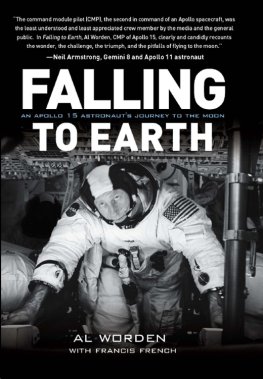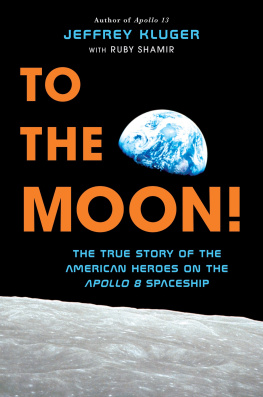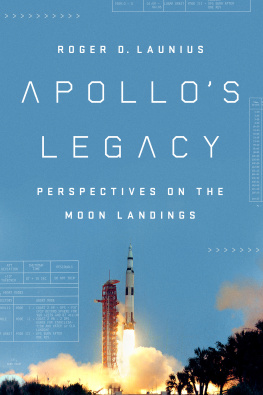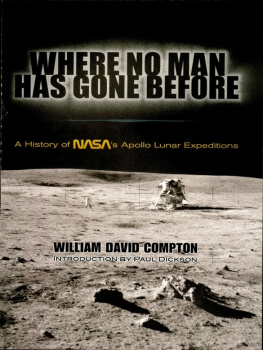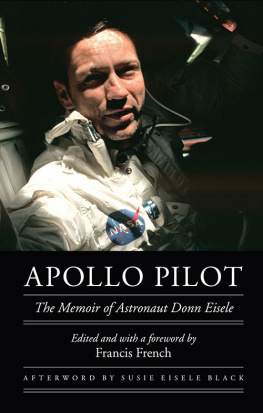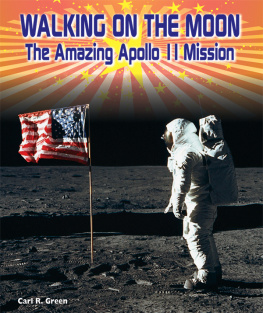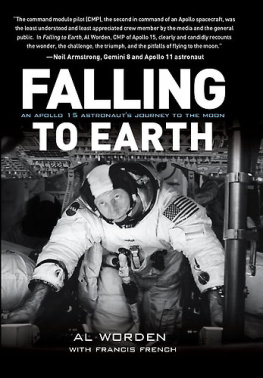CHAPTER 2
The Office
April 1967
Manned Spacecraft Center, Houston
Deke Slayton stood in the small conference room on the third floor of Building 4, facing the collection of astronauts he had called together. In the spring of 1967, NASA was moving on from the tragedy that would always be known as the Fire. Amid lingering criticism of the agency, the accident review board had made its report to Congress. At the North American plant in California, a redesigned, fireproof Block II command module was under development, and now there was an astronautGemini veteran Frank Bormanworking hand in hand with new management. And here in Houston, it was time to get back to the business of making the end-of-the-decade deadline for the lunar landing. Eighteen astronauts waited for the meeting to begin.
Slayton was not one for fanfare. The guys who are gonna fly the first lunar missions, he said, are the guys in this room.
At first glance, there was nothing remarkable about these men. Sometimes, when they walked the halls of the space center, clad in NASA-blue flying coveralls, they were easy to spot; here, dressed mostly in sports shirts and slacks, they wore a casual anonymity. But their trim bodies hinted at lives of self-discipline, and their eyes, quick and bright, revealed an unwavering concentration born of countless adventures in the air, in a profession in which the mind simply does not wander. To the people who worked with them engineers, simulation instructors, flight controllersthey were just regular guys/' but even they could not deny that there was something remarkable about who these men were, where they had been and, most of all, where they were going. Most of these eighteen were veterans of the two-man Gemini flights of 1965 and 1966. Those missions, as bold as they were successful, had been their training ground for the moon.
If the astronauts had been a squadron, Slayton would have been their wing commander; sometimes, in conversation with each other, they called him Father Slayton. In 1959a lifetime ago, it seemedthere were just seven men who called themselves astronauts, and Slayton had been one of them. He was considered one of the most gifted pilots of the Original 7, but even now Slayton was still waiting for his first spaceflight. In 1962, only weeks before he was scheduled to become the second American in orbit, Slayton was abruptly grounded by the doctors. He had a condition called idiopathic paroxysmal atrial fibrillation: every so often, for unknown reasons, his heartbeat became irregular. Slaytons protests that he felt absolutely fine and that his performance was unaffected were to no avail. NASAs administrator, James Webb, ruled that the agency couldnt take the risk of sending him into space. And that was not the end of Slaytons frustration; he was banned from flying an airplane by himself.
Since then, while waging a lonely battle to get back on space-flight status, Slayton had served as the space centers director of Flight Crew Operations, managing the affairs of every pilot at the center, including the astronauts. From his office on the ninth floor of the administration building, he oversaw just about everything the astronauts did, from training to business trips to public appearances. In the most difficult of ironies, it was Slayton who picked the crew for every mission. He would have given anything to join them, to trade his executive suite for a government-issue desk in the Astronaut Office, and they knew it.
There is no record of how the astronauts reacted to Slaytons announcement; probably they said nothing. To some, Slaytons words came as welcome reassurance; for others they were not news. For a handfulthe rookiesjust being in this room at all was reward enough; it meant an end to years of struggling to make it onto a space crew. But none of them, rookie or veteran, missed the significance of what Slayton said. They were finalists in an unofficial and largely unspoken competition in which the prize was the ultimate test flight, the first lunar landing. Most of them saw it the way Pete Conrad did. He knew he belonged in this room; he had known he would be here all along.
No one in the Astronaut Office was more of a natural than Pete Conrad. At the age of thirty-six, he was not only one of the most seasoned pilots in the Office, but one of the most flamboyant. He appeared to enjoy everything he did. He liked to race Formula-V cars and was given to wisecracks and practical jokes. He used foul language in the simulator. He enjoyed giving the other pilots nicknames they hated. It was Conrad, for example, who had bestowed the monicker Shakyanathema for a test piloton his good friend Jim Lovell. For every Conrad scheme that the world knew about, there were probably three others he never pulled off. Returning to earth after Gemini 5, he planned to do a somersault across the carrier deck, just to show the world that eight days in space hadn't harmed himbut at the last moment, spotting the red carpet, the admirals, and the bands, he decided against it. Conrad was the kind of astronaut the press loved to write about.
Now Conrad had his own Apollo crew, and with characteristic enthusiasm he was ready to lead them into training as backups for an early Apollo flight in earth orbit. Eventually, he knew, his team would rotate into a prime crew assignment, and although nobody could predict what his mission might be, he had his sights on commanding a lunar landing flightand if possible, the first one. He felt sure the other men in this room, especially the mission commandersWally Schirra, Jim McDivitt, Frank Borman, Tom Stafford, and Neil Armstrongshared his ambition. But no one could predict who might make that first landing, not even Slayton, and that was part of his message on this April day. The Block II command module wouldn't be ready for its first manned flight until next year at the earliest. After that, NASA would have to clear a string of daunting technical hurdles before anyone could attempt a moon landing. Astronauts would have to check out the lunar lander and practice space rendezvous, perhaps several times, in a succession of earth-orbit missions. Then there would be test flights in lunar orbit. And then, only if everything before had gone well, the next crew would try for the landing.
But that plan could change at any time. If something went wrong on one mission, the next flight would have to make up those missed objectives. And fate could intervene without notice, just as it had with Grissom, White, and Chaffee, and a backup crew would have to step in. Slayton had put together these six crews so that no matter what happened there would be a team of competent astronauts available for any flight. As the missions progressed he would just keep rotating crews, until one of them accomplished Apollo's ultimate goal. His message this day was simple: Any crew could fly any mission. In his mind they were all equal. The real selection, he said, was made the day each of them joined the Astronaut Office. It wasn't the first time the astronauts had heard Slayton make such a statement; it would not be the last.
For some of the men in this room, like Pete Conrad, the journey to the moon had offered few obstacles so far. For the rookies, like Bill Anders, it had been laden with delay and frustration. But none of these astronauts understood precisely how they had been selected to fly these missions. And if you had asked any of them, especially the rookies, whether Slayton's statement was really true he might as well have said that the moon doesn't go around the earth.
One morning early in 1963, six shiny Corvettes tooled through the space suburbs" of Timber Cove and Friendswood, and converged on Interstate 45, heading for Houston. Moving onto the freeway, the six drivers encountered each other and took off. They roared past startled motorists at 100 miles an hour, passing them two at a time, one on the left, one on the right. They jockeyed for position, hunting for clear lanes, weaving through the rush-hour traffic. As quickly as they had come, the six exited the freeway and sprinted through city streets to the Farnsworth and Chambers building, where the astronauts had temporary offices. The cars pulled into the parking lot, still crackling with the heat of the race. Doors opened and out came Gus Grissom, Wally Schirra, Gordo Cooper, Deke Slayton, Jim Lovell, and Pete Conrad. The men laughed as they locked up and headed for their offices. Deke Slayton, clenching the stub of a cigar in his teeth, muttered, Goddammit, we gotta knock this shit off. We'll get ourselves arrested.
Next page

